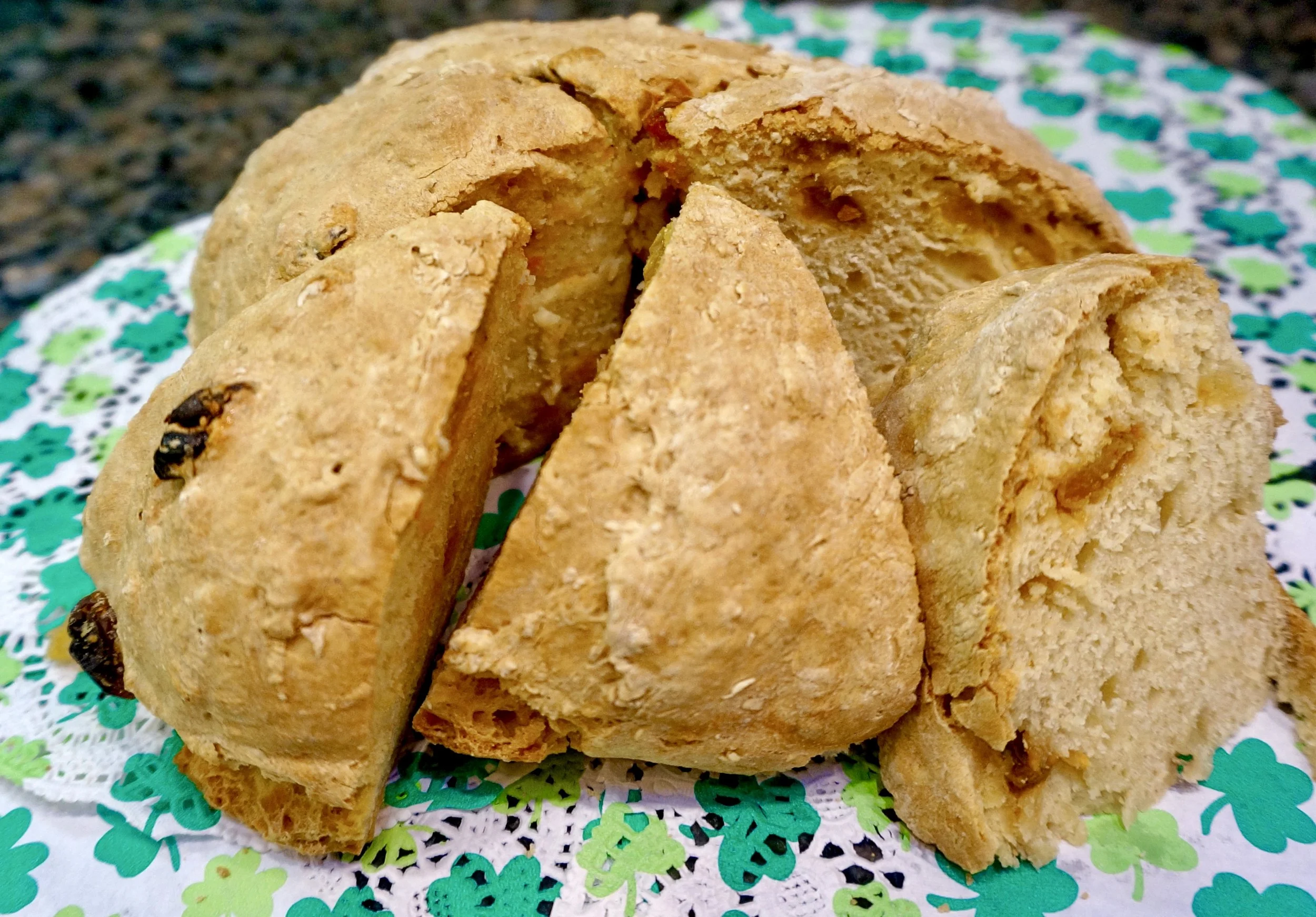I don’t know why I wait for St. Patrick’s Day to make and eat Irish Soda Bread. It’s a really nice treat for breakfast together with my usual yogurt. It isn’t sweet and it has a compelling, moist, dense texture that makes you feel as if you aren’t going to be hungry again in an hour but also isn’t heavy at all.
And yet I never think to make it until now.
Silly. This is too good for once-a-year.
Here’s a pareve version, which you can use if you’re kosher and want to have some delicious bread with corned beef and cabbage (or any other meat). It tastes just like the dairy version, made with buttermilk (there’s a note on how to substitute just below the recipe).
Irish Soda Bread (pareve version)
3-1/2 cups all-purpose flour
1 tablespoon brown sugar
3/4 teaspoon salt
1 teaspoon baking soda
1-1/2 cups water
1 tablespoon cider vinegar
1/2 cup raisins
1 teaspoon caraway seeds, optional
Preheat the oven to 350 degrees. Lightly grease a baking sheet. Combine the flour, brown sugar, salt and baking soda in a bowl. Mix the water and cider vinegar together and pour over the flour mixture. Mix the ingredients until you can form a soft dough. Work in the raisins and caraway seeds, if used. Sprinkle some flour on a work surface and knead the dough 18-20 times. Shape the dough into a ball, then flatten the ball slightly. Cut a small X on top with the tip of a sharp knife. Place the dough on the baking sheet. Bake for 40-45 minutes or until golden brown. Makes one
NOTE: For a more traditional, dairy version use 1-1/2 cups buttermilk in place of the water and cider vinegar
